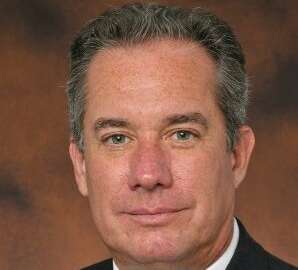
Ahead of Trump’s 2018 budget release, NARFE predicts tough fight for fed pay/benefits
With the President's fiscal 2018 budget expected later this week, lawmakers and federal employee unions are gearing up for what could be a long and contentious...
With the fiscal 2018 budget process beginning in earnest later this week, federal employees and retirees could eventually see future provisions that have a striking resemblance to those that House lawmakers introduced and included in 2016 budget proposals.
The National Active and Retired Federal Employees Association said it expects to see familiar provisions calling for increases to current federal employees’ retirement contributions, higher premiums in the Federal Employee Health Benefit Plan (FEHBP) and a possible elimination of Federal Employees Retirement System (FERS) for new hires altogether.
The House 2016 budget included eight provisions totaling $318 billion in cuts to federal employee and retiree programs, Jessica Klement, NARFE’s legislative director, said.
“Going into this Congress, the biggest fight that we are facing is the fiscal 2018 budget process,” she said at the association’s legislative conference.
NARFE also fears the return of another familiar provision: changing the formula for how the Thrift Savings Plan calculates the average interest rate for the G-Fund. It would depend on the specific formula, but lowering the rate of return could render the G-Fund nearly worthless for TSP participants.
The President is expected to release the 2018 budget blueprint some time on Thursday. Office of Management and Budget Director Mick Mulvaney said it’s only a rough outline of agency topline numbers for 2018. A more detailed budget proposal should come out sometime in May. And Congress won’t start work on the 2018 budget until it finishes the resolution and reconciliation process for 2017.
Congress will likely use tax reform as an avenue for the budget reconciliation process again for 2018, Klement said.
“This is why the [20]18 budget process is so important for NARFE members,” she said. “If [lawmakers] can get past the resolution and they can do FY18 budget reconciliation that includes tax reform and they need some savings, that piece of legislation only needs 51 votes in the Senate.”
NARFE predicts those savings could come in the form of cuts to federal employee and retiree programs.
“Last year, the last session of Congress we told you it was unprecedented, and it was,” NARFE National President Richard Thissen said of some lawmakers’ recent targets to the federal workforce during a March 14 speech to his members. “But … it was just spring training. It was the exhibition season. The regular season is starting this session. ‘Unprecedented’ means that it never happened before, but it doesn’t mean it can’t happen again. And it is happening in spades. While we faced many of these same challenges last year, the stars are in a different alignment. Last year we could always depend on, or most likely depend on, a veto of something really, really bad that came out of Congress. We cannot depend on that this year.”
Federal employee unions and other associations have said they’re refining their messages and want to educate more people about the federal workforce and the impact it has on the public.
But given the makeup of the House, Senate and now White House — and considering the legislation and messages it heard in the past from the 114th Congress — NARFE is taking a different approach.
“In the past, we relied on our friends to help us just block things,” Thissen told Federal News Radio. “And we were successful with that last session of Congress. … This time it appears that there needs to be a little bit of an uptick in our interface with every member of Congress from an education standpoint.”
For NARFE, one of those partners has been Rep. Barbara Comstock (R-Va.), who indicated that she wouldn’t likely be happy with the President’s budget proposal, which is expected Thursday. And she said she’ll remind her Republican colleagues and House leadership of federal employees’ concerns.
“I really do appreciate the opportunity to be able to tell your story and have our colleagues understand that you can’t balance the budget on the backs of our federal employees,” she said. “This is a lesson that is learned by each administration, isn’t it?”
Comstock appeared confident that House appropriations committees and other members like herself would be able to persuade leadership that major cuts to some agency budgets wouldn’t be reasonable.
“We’ve heard [of] these threats of big cuts to the State Department. I’m confident that our appropriators who are looking at that are going to say, ‘That’s not going to work. That’s not adequate,'” she said.
Thissen said the association doesn’t want to argue with Republican lawmakers. But he hopes NARFE members can change the hearts and minds of their representatives.
“We want them to stay active, and we want them to contact all the members of Congress,” Thissen said. “Yes, it’s easier to talk to your friends because everybody’s on the same sheet of music. It’s harder to talk to the ones who are not on your side, but again, it’s an education process.”
A former federal employee herself, Comstock said she remembers how in previous presidential transitions, it often took some time for the new political appointees to learn the value that federal employees bring to their agencies. Once they did, their tone began to change.
“You could see political appointees who came in learning … how much they needed those career federal employees to provide them guidance and to understand the workings of the agencies,” Comstock said.
Copyright © 2025 Federal News Network. All rights reserved. This website is not intended for users located within the European Economic Area.
Nicole Ogrysko is a reporter for Federal News Network focusing on the federal workforce and federal pay and benefits.
Follow @nogryskoWFED
Related Stories





